By Nicholas Remy
All photos © 2024 Nicolas Remy
When reviewing the Ikelite DS230 strobes for The Underwater Club, I was impressed by the quality and abundance of light delivered by these bright, powerful flashguns. For most of my wide angle work, ranging from fast-swimming fur seals to lighting all sorts of coral reefs, I found the DS230s to be “over-kill”, meaning I only needed a fraction of their power when using them on-camera (attached to my housing).
Since I already owned 4 other strobes, I thought I could try the new Ikelite in the one scenario where you always want more power from your lights. I am referring to off-camera lighting.

High Sensitivity Optical Converter, attached to the electrical bulkhead of my DS230 strobe. The black threaded cover includes a fiber optic port. When the fiber optic port is removed, the Converter acts as a remote trigger.
As luck would have it, I had an invitation to partake in the Aqaba 1st Underwater Photography competition, and I thought the wrecks of Jordan would be an excellent playground to use the DS230s as remote strobes.
Triggering a remote strobe
Whilst it is possible to use extra-long electrical sync cords or fibre optics and keep the remote strobes wired to the housing, I much prefer having them independent, to be fully flexible on my remote lights placement. In that case, you will be using the on-camera strobe(s)’ light as a signal to trigger the distant strobe. Meaning, you need some sort of optical trigger which will sense the master strobe’s light, and tell the remote strobe to fire.
Even when my DS230s are on-camera, I chose to trigger them optically, which is achieved with the High Sensitivity Optical Converter for Remote Triggering of DS Strobes # 4405.
Take the threaded fiber optic port off, and the Optical Converter becomes a highly sensitive remote strobe trigger, great for off-camera lighting, especially when combined with an Ikelite extension cord. Extension cords are available in 1 foot (0.3 meter), 3 foot (0.9 meter) or 15 foot (4.5 meter) lengths.

The DS230 strobe mounted on a tripod with the extension cord and optical converter attached.
Essentially, whenever I decide to use my DS230 as a remote strobe, I disconnect the Optical Converter from the strobe and plug it on one end of the 3 ft Extension Cord, with the other end of the extension cord attached to the strobe.
Pool practice with my model
Prior to the trip, I researched the Jordanian wrecks and had in mind a couple of lighting setups, all requiring help from my model-to-be Matt Waters (host of the ScubaGoat podcast). Practice makes perfect, so we went to a local pool to give a Matt a chance to get his hand around the DS230 strobes, tripod, and remote triggers.
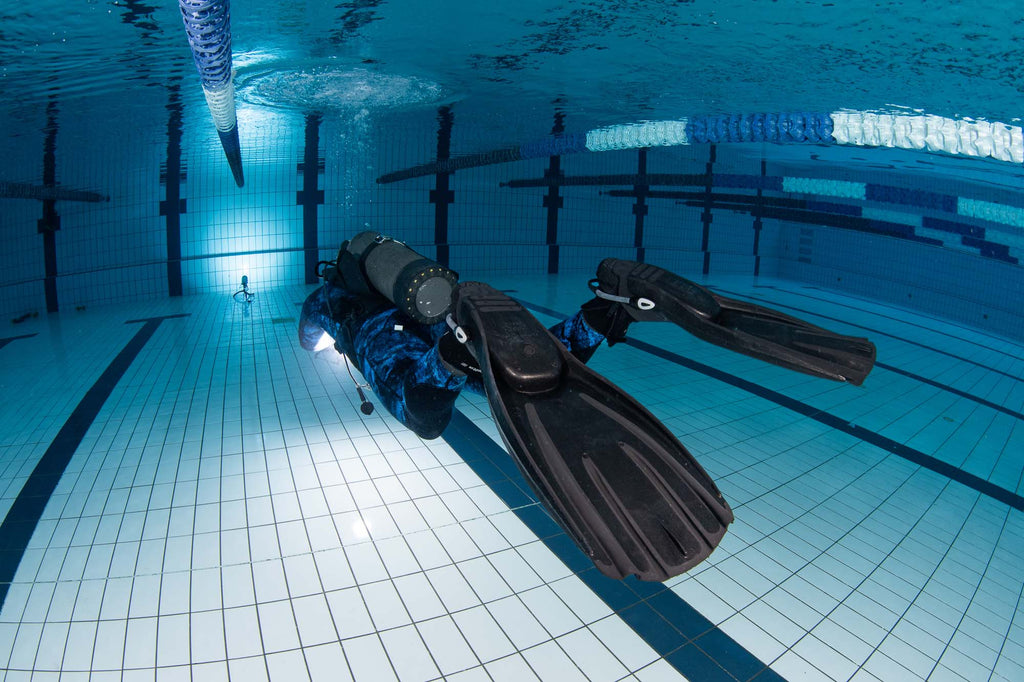
Pool practice for one of the lighting setups I had in mind (#4), for the Tristar wreck. Matt is lighting the pool floor with one DS230 strobe, which in turn triggers the second DS230 in the background. • Nikon Z9, Nikon 8-15mm fisheye with FTZ-II adapter • 1/60 • F/14 • ISO 640
There were 4 types of shots that I needed Matt to get comfortable with:
- Pointing a strobe towards himself, while he faced the camera.
- Pointing a strobe towards himself, while we swam away from the camera.
- Lighting a wall with one strobe on tripod.
- Performing a lighting chain, where my on-board strobes would trigger one Ikelite DS230 carried by Matt, which in turn would trigger the second DS230, positioned further away, on-tripod.
We were then ready to test the Ikelike DS230 strobes in and around Jordanian wrecks pictured below.
Handling
The first advantage that became visible had to do with the weight of the extension cord, which is slightly negatively buoyant. This made it much easier to route the cord and control the positioning of the light sensor, pointing it towards the strobe that would be triggering it.
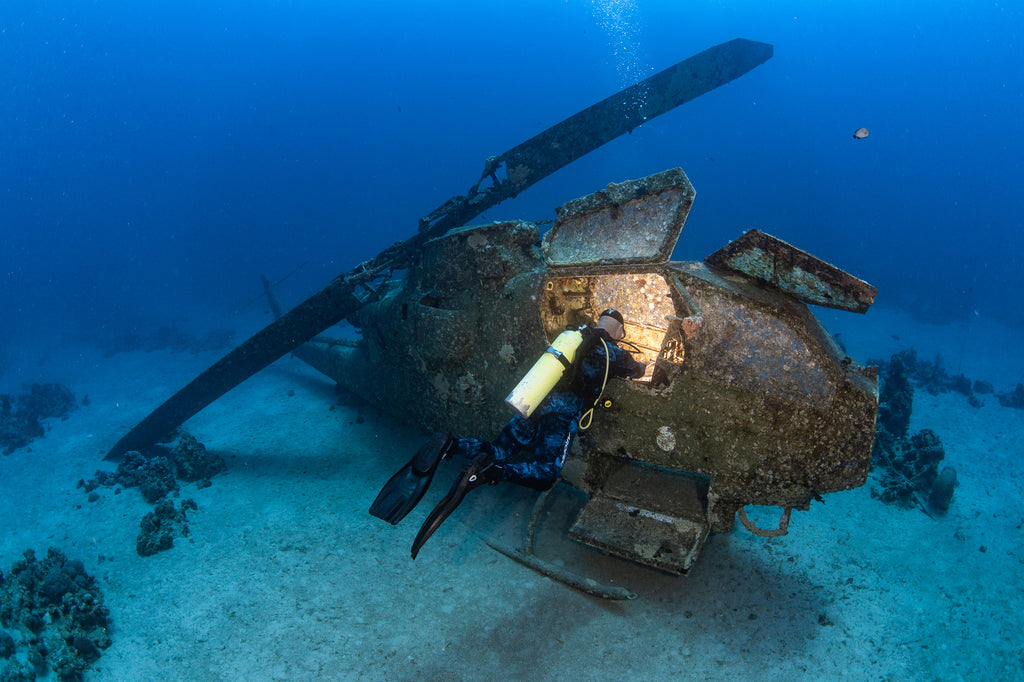
My model-lighting-assistant-at-large is busy installing a DS230 strobe inside the cockpit of a Cobra chopper, and routing the extension cord so that the light sensor can “see” my on-camera strobes. • Nikon Z9, Nikon 8-15mm fisheye with FTZ-II adapter • 1/200 • F/13 • ISO 400
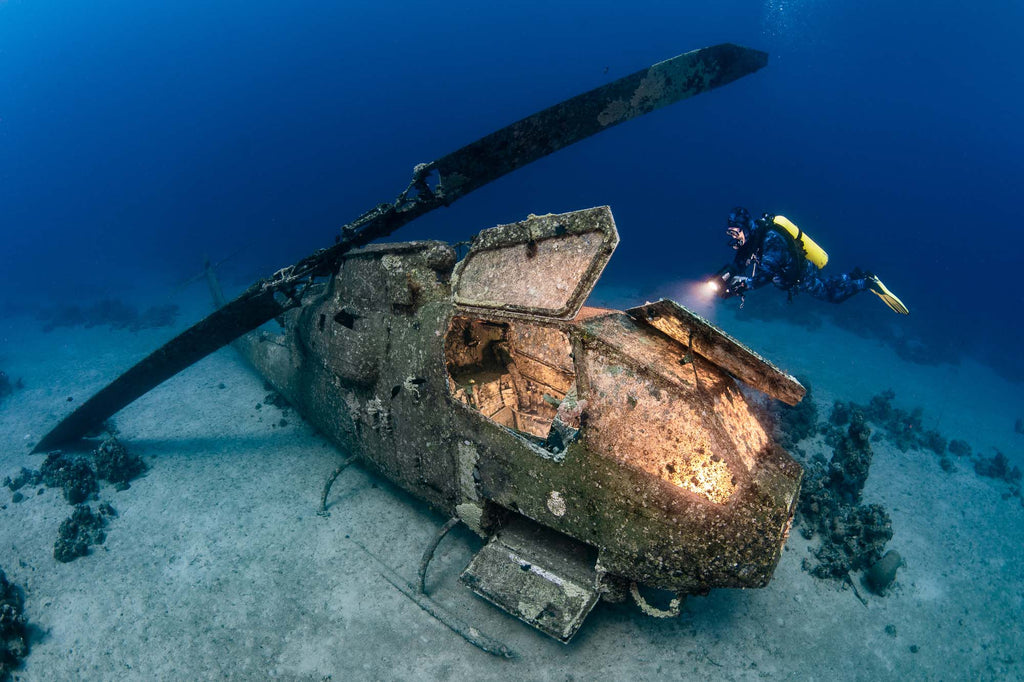
The end-result: two Ikelite DS230 strobes setup inside the cockpit, one on each of the seats, and their power level had been skillfully adjusted by Matt, using the hand-signals we chosen for that purpose. Matt points a video light at the wreck, while being partly lit himself by the DS230 strobes (through the cockpit’s glass). This is a photo I had visualised before the trip, but the teamwork with my model/assistant was critical in making it happen. • Nikon Z9, Nikon 8-15mm fisheye with FTZ-II adapter • 1/100 • F/11 • ISO 400
This is a big improvement over my previous habit of using fiber optics to trigger remote strobes. This inferior method led to all sorts of stability issues, as soon as there was the slightest bit of swell or current.
Remote light brightness vs image quality
Nowadays, wide-angle photographers who work with distributed light sources tend to rely on powerful video lights, so that they can preview the end-result, before even taking the first photo. This is a proven solution for cave diving photography and it generally works well for wreck photography too.
However, at the shutter speeds we typically use underwater, powerful strobes like the Ikelite DS230 contribute much more light than high-end video lights, to the final exposure. In other words, to get the same impact from a remote light, you would have to bump up the ISO when using a continuous light source, instead of a strobe. In doing so, you also let more ambient light bleed-in, giving you less control over the natural vs artificial lighting.

The second cabin of the Tristar plane wreck, using one of the lighting arrangements which we had practiced in the pool. One strobe held by the model, which triggers the second strobe in the background.
On the other hand, with my DS230 as remote lights, I could stick to low ISO values (ISO 500 or less) and still keep full control in the appearance of my water backgrounds.
Sensitivity
Last but not least, the Optical Converter exceeded my expectations in terms of its ability to sense my on-camera strobes’ light. This isn’t too hard when working inside a wreck (the master strobe’s light is easy to tell apart), but I found I was able to trigger an off-camera DS230 reliably, even though the sensor was exposed to some bright ambient light at mid-day, in 48 feet (15 meters) of water.
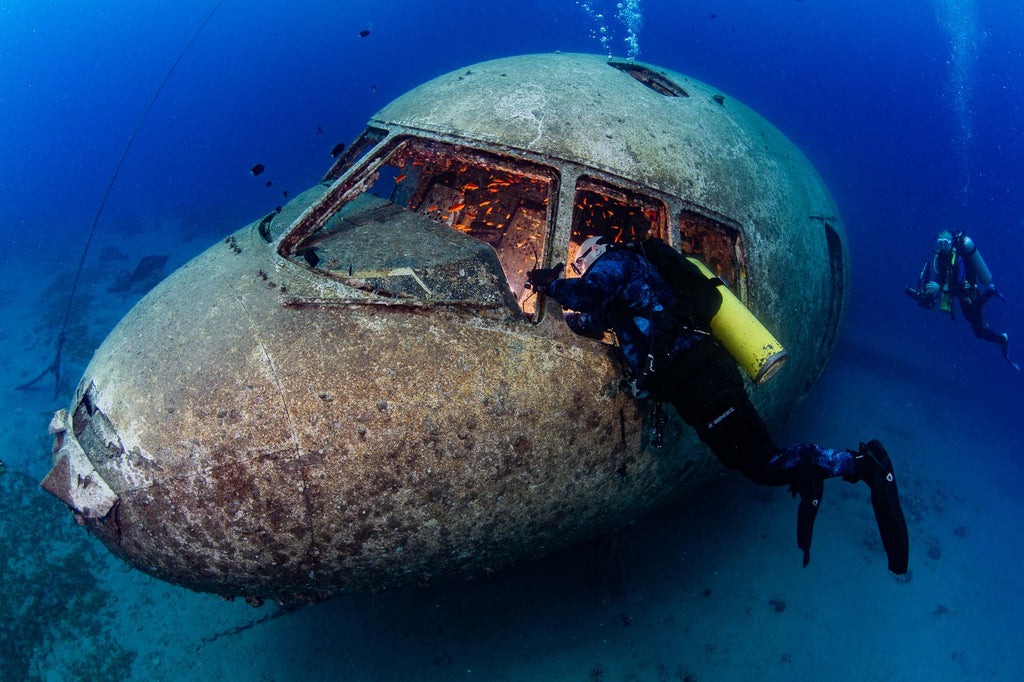
Thanks to the strobes’ power, I could stick to a relatively low ISO value, and pick a shutter speed that would let the water look blue, through the aircraft’s windows. • Nikon Z9, Nikon 8-15mm fisheye with FTZ-II adapter • 1/50 • F/13 • ISO 500
One word of caution with this setup: make sure you switch-off the remote strobe when not in use. Indeed, the light sensor is so sensitive that it will pick ripples on the surface and start firing the strobe rapidly, if you were to inadvertently point it up.
Conclusion
All-in-one, I found the DS230 and Ikelite extension cord to be most efficient setup I ever used when doing wide angle photography with remote strobes. The sensitivity of the Optical Converter, the negative buoyancy of the extension cord and the brightness of the strobe all make the job easier, letting me worry less about the gear and focus on being creative.
I want to thank Deep Blue Dive Centre, the photography-focused & eco-friendly dive operator who took great care of us while we were enjoying the Jordanian wrecks.
Additional Reading
Shark Photography with the Canon R5 and DS230 Strobes
Sea Turtle Portraits with DS230 Strobes
How To Get the Best Shots When Shooting Wrecks
Burst Shooting DS230 Strobes & Canon R7 // Swimming Photography with Kids
Mixing Different Sized Strobes for Underwater Photography [VIDEO]
Why You Need Strobes Underwater
 Nicolas Remy is an Australia-based pro shooter and founder of online underwater photography club & school The Underwater Club. His images have been widely published in print and digital media, and have won over 35 international photo awards. Read more and view his portfolio on Nicolas' website and follow him on Instagram @nicolaslenaremy.
Nicolas Remy is an Australia-based pro shooter and founder of online underwater photography club & school The Underwater Club. His images have been widely published in print and digital media, and have won over 35 international photo awards. Read more and view his portfolio on Nicolas' website and follow him on Instagram @nicolaslenaremy.











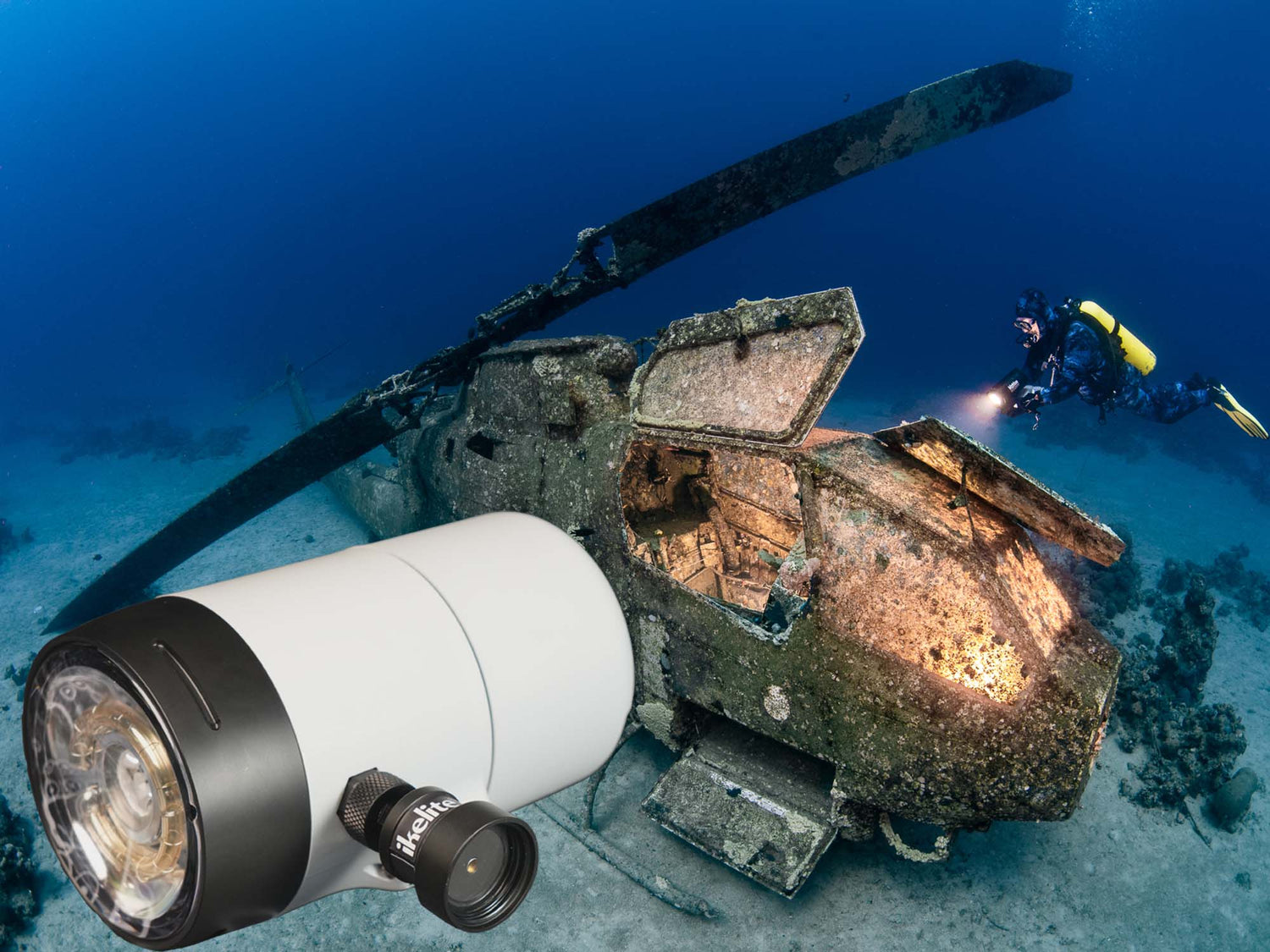
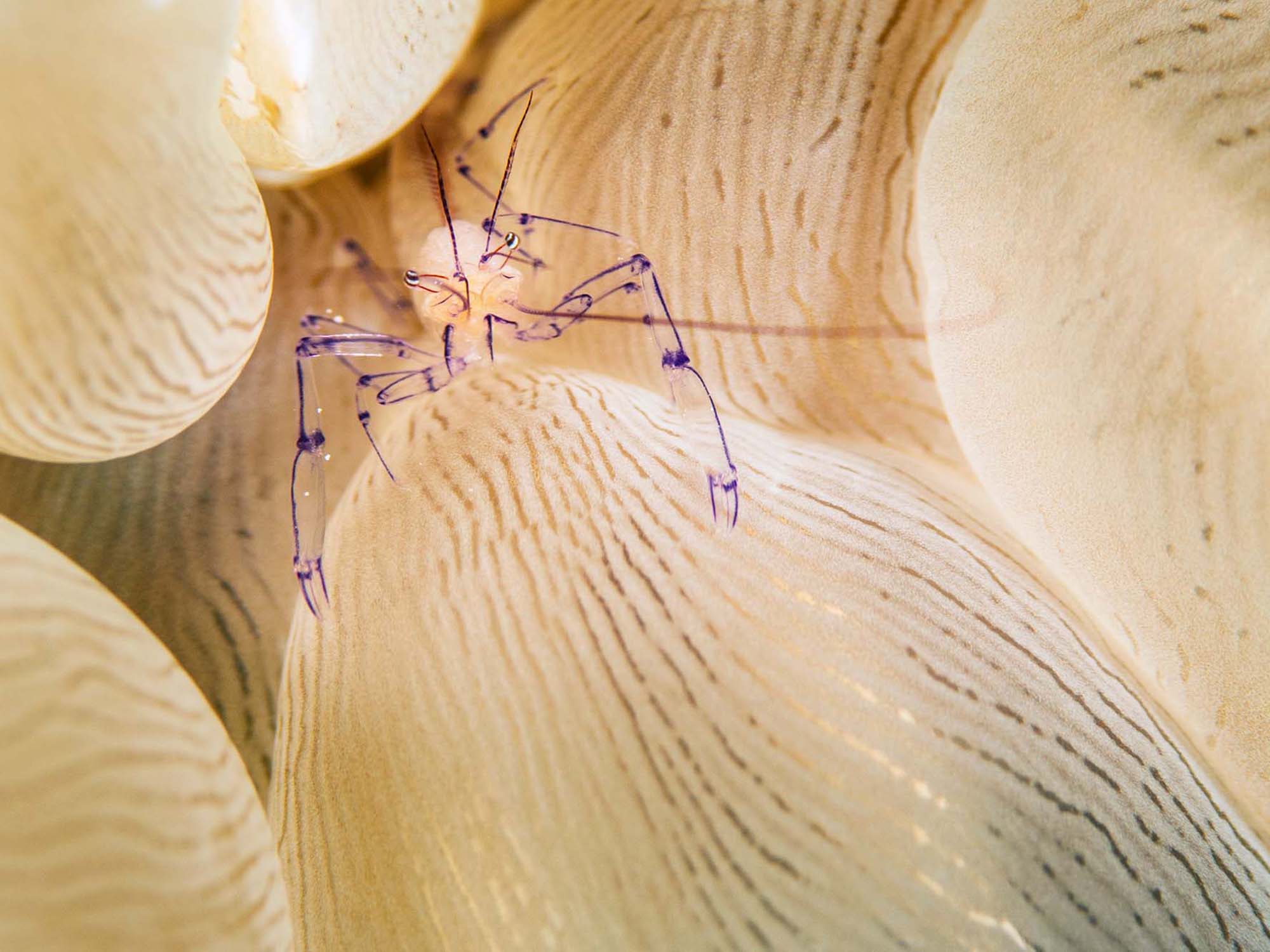
![BURST shooting // Using Drive Mode to your advantage underwater [VIDEO]](http://www.ikelite.com/cdn/shop/articles/Using_Drive_Mode_to_Your_Advantage_copy.jpg?v=1712943731&width=2000)